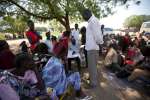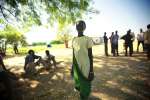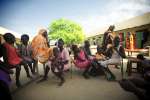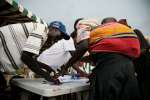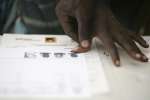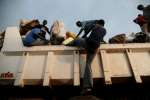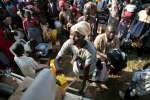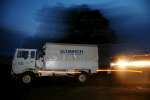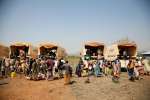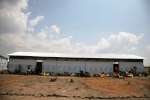- Text size
 |
|  |
|  |
| 
- Français
UNHCR condemns air attack on refugee camp in South Sudan
News Stories, 11 November 2011
GENEVA, November 11 (UNHCR) – The UN refugee agency on Friday strongly condemned the aerial bombing of a temporary refugee camp in South Sudan sheltering more than 20,000 civilians fleeing from conflict in neighbouring Sudan's Nuba Mountains.
"Two of the bombs fell within the Yida camp, including one close to the school," said UNHCR spokesman Adrian Edwards. "Fortunately there were no casualties in the camp and we are verifying the situation of surrounding communities," he told journalists in Geneva.
UNHCR had been readying new refugee sites away from the border in Unity state when the incident occurred on Thursday. "We had hoped to begin the relocation of refugees but our efforts have so far been hampered by heavy rains which have made the road to the camp impassable," Edwards explained.
The refugee agency is concerned by the escalating tensions in the border areas between Sudan and South Sudan, where hundreds of thousands of civilians have been uprooted since June as a result of fighting.
There are also reports this week of bombing in New Guffa village of South Sudan's Upper Nile state resulting in civilian casualties. As many as 55,000 civilians originating from the Damazine and Kurmuk areas are said to be moving southwards in Sudan's Blue Nile state. Some of these people are heading to Chali within Blue Nile state.
Others are crossing into New Guffa village, nine kilometres from the border, or Bunj, the capital of Maban county in South Sudan's Upper Nile state. Others may be moving into neighbouring Ethiopia, where more than 30,000 Sudanese have found refuge and are being helped by UNHCR and its partners.
New arrivals in Maban county describe empty villages south of Kurmuk town on the other side of the border. The new arrivals are being registered in Bunj, where UNHCR has a way station as well as a warehouse that holds enough supplies for 15,000 refugees.
UN assessment teams are planning to travel to Maban over the weekend to assess the humanitarian conditions for new arrivals. Meanwhile, local authorities have been identifying temporary reception sites as more arrivals are anticipated amid heightened tensions.










